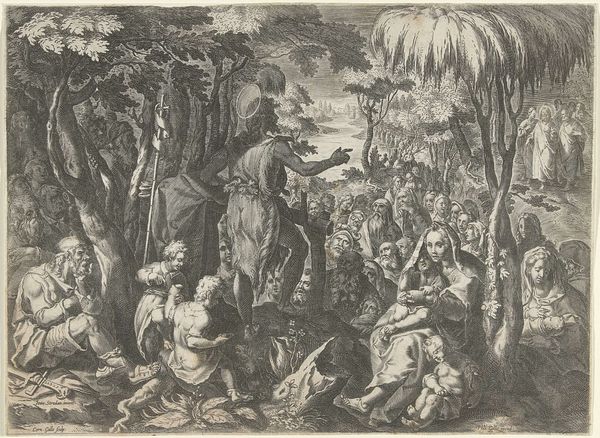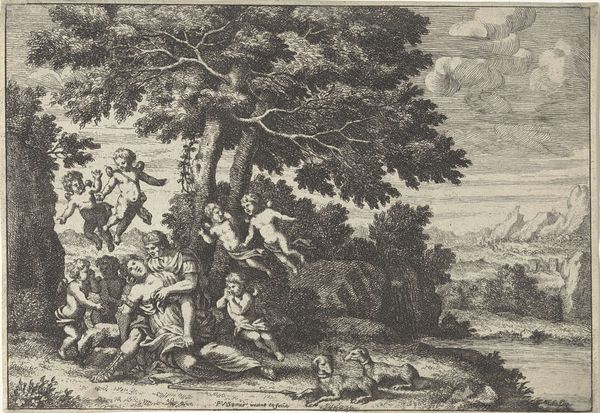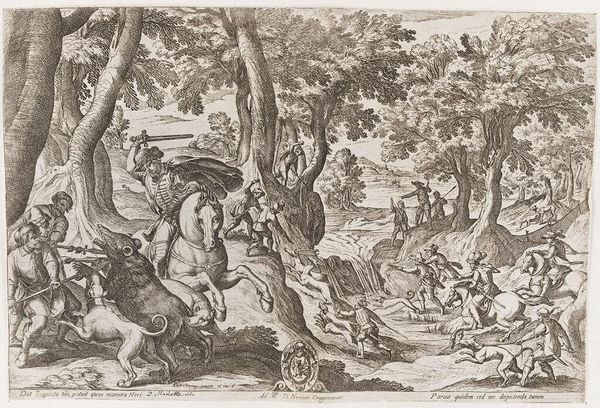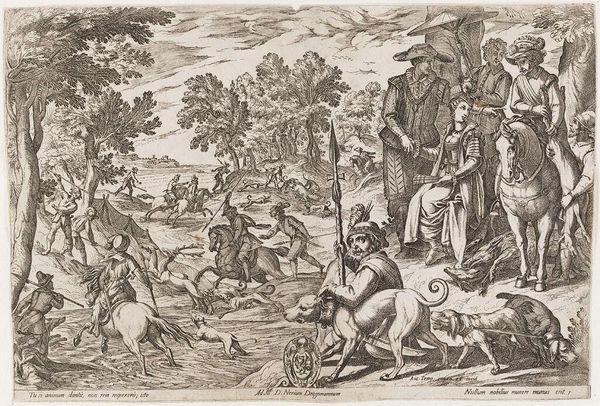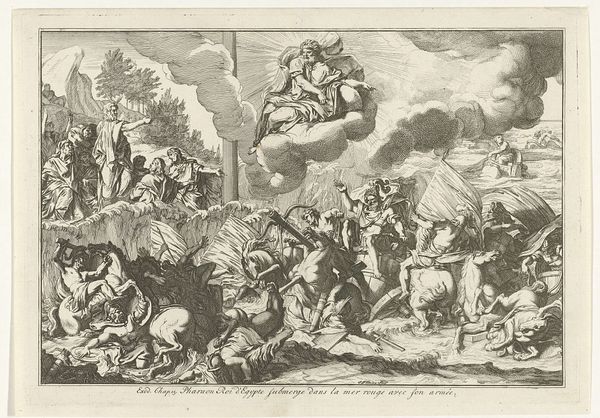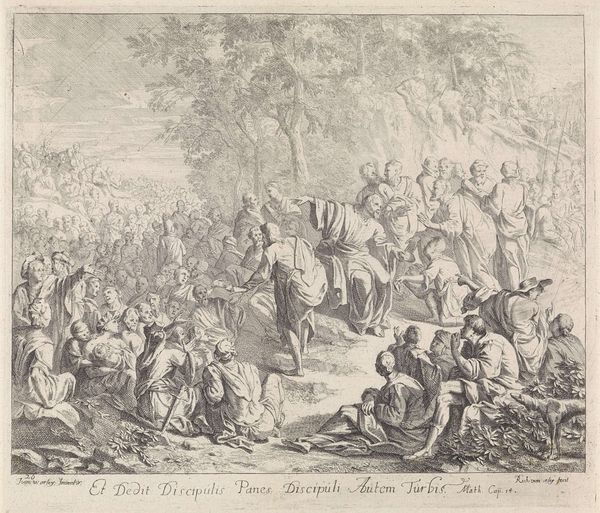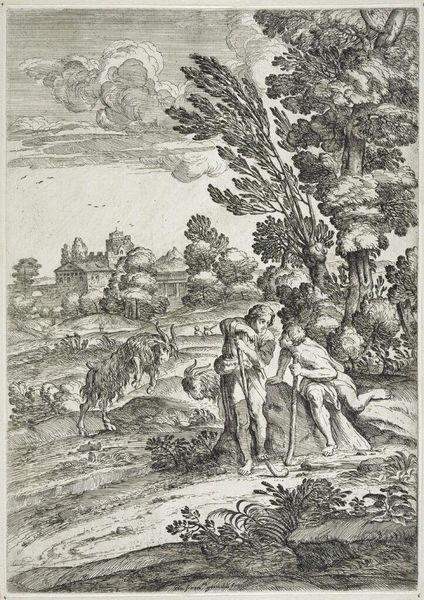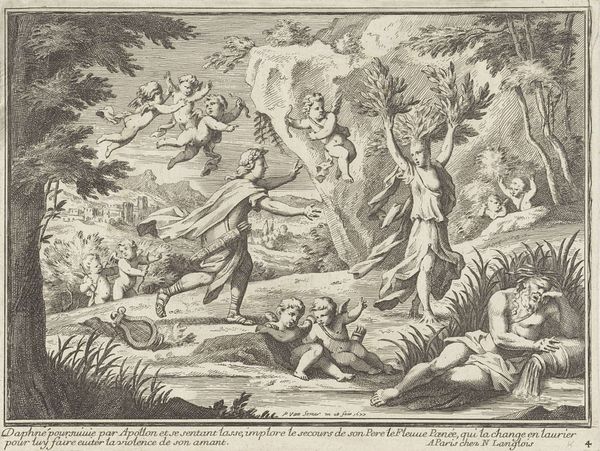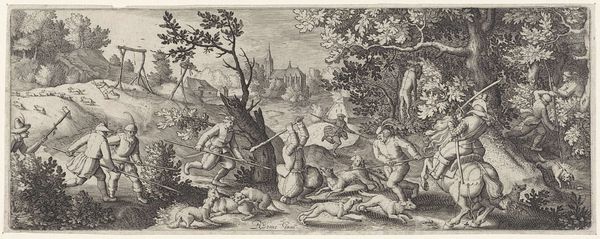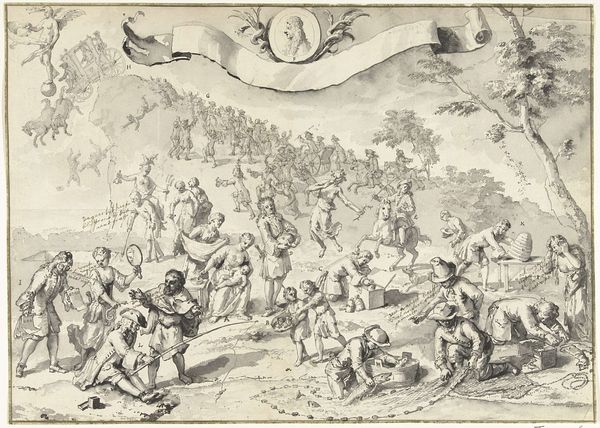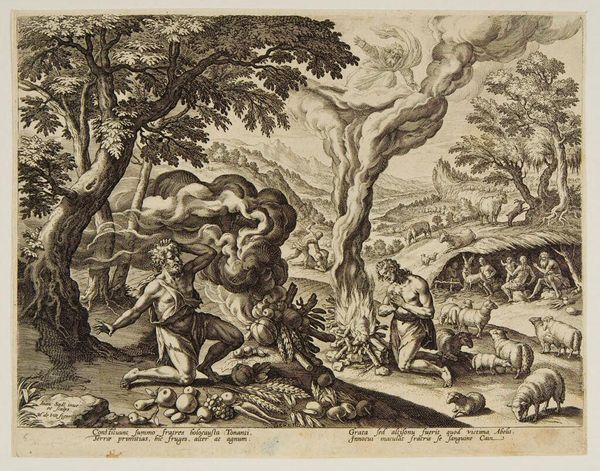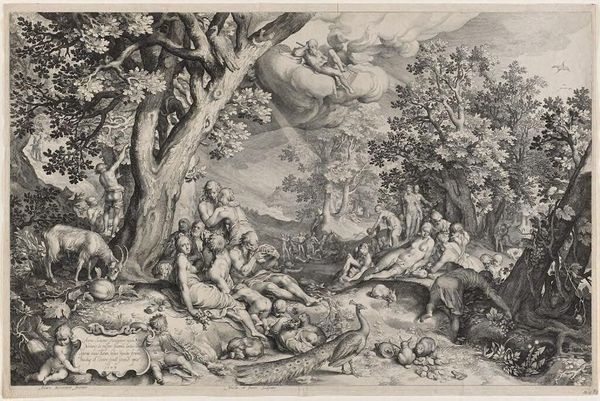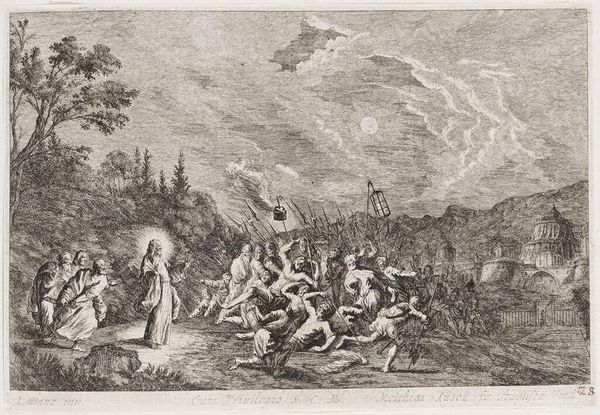
print, engraving
#
baroque
# print
#
landscape
#
figuration
#
line
#
history-painting
#
engraving
Dimensions: height 76 mm, width 128 mm
Copyright: Rijks Museum: Open Domain
Curator: This is Jacob Matham’s "Bacchus Finds Ariadne on Naxos," an engraving created in 1616 and housed right here in the Rijksmuseum. What strikes you about it initially? Editor: The energy! It's a frenetic, swirling scene with a multitude of figures, almost overwhelming in its detail. There’s a chaotic joy in the depiction that immediately draws me in. Curator: Indeed. Let's unpack that a bit. This print depicts the classical myth where Bacchus, the god of wine and revelry, discovers Ariadne abandoned on the island of Naxos after being left there by Theseus. Matham places this event within a broader historical context of festive imagery. Editor: And isn't that abandonment of Ariadne rich for contemporary readings about female agency? I find myself considering the narrative from her perspective: betrayed, alone, and then... rescued? Or perhaps appropriated into another patriarchal structure? Is Bacchus truly a liberator, or simply another powerful male figure stepping into her story? Curator: It is certainly an entry point into larger questions of power dynamics, yes. However, within its original socio-cultural context, this imagery offered something particular to its viewing audience, in its own way, for its moment in history. Editor: Looking closer at Matham’s technique, the use of line is extraordinary. There is such incredibly fine detail; the textures are quite amazing for this kind of medium, especially considering that these prints could function for mass distribution, meaning accessibility in viewing, compared to say a painting. Curator: Absolutely. Prints such as this were integral in disseminating visual ideas and shaping artistic tastes throughout Europe at this time. Beyond pure aesthetic considerations, though, it reflects the specific context and patronage for printmaking, something to consider to avoid looking just for aesthetics in an old artwork, it also offered income opportunity and sometimes security, to people like Matham. Editor: That’s a vital point. So while we’re admiring its artistic merit and line work, we also need to question and explore its socio-economic implications within the art world itself, as it still plays a major role nowadays. Curator: It’s these intertwined layers that make historical artworks resonate—an artifact created within its time, available for our interpretations today. Editor: And open for constant re-evaluation through contemporary lenses, making these artworks ever alive and useful in modern dialogue.
Comments
No comments
Be the first to comment and join the conversation on the ultimate creative platform.
